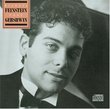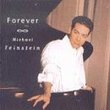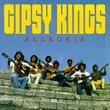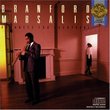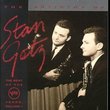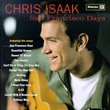| All Artists: Leopold Stokowski, Edward Elgar, Anton Webern, Arnold Schoenberg, Gustav Mahler, Esa-Pekka Salonen, Los Angeles Philharmonic New Music Group Title: Bach: Transcriptions Members Wishing: 0 Total Copies: 1 Label: Sony Release Date: 8/29/2000 Genre: Classical Styles: Forms & Genres, Fantasies, Historical Periods, Modern, 20th, & 21st Century, Symphonies Number of Discs: 1 SwapaCD Credits: 1 UPC: 696998901223 |
Search - Leopold Stokowski, Edward Elgar, Anton Webern :: Bach: Transcriptions
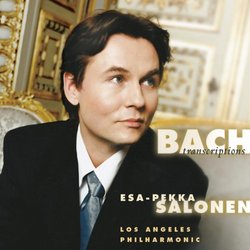 | Leopold Stokowski, Edward Elgar, Anton Webern Bach: Transcriptions Genre: Classical
![header=[] body=[This CD is available to be requested as disc only.]](/images/attributes/disc.png?v=15401716) ![header=[] body=[This CD is available to be requested with the disc and back insert.]](/images/attributes/disc_back.png?v=15401716) ![header=[] body=[This CD is available to be requested with the disc and front insert.]](/images/attributes/disc_front.png?v=15401716) ![header=[] body=[This CD is available to be requested with the disc, front and back inserts.]](/images/attributes/disc_front_back.png?v=15401716) |
Larger Image |
CD DetailsSimilarly Requested CDs
|
CD ReviewsSuperb Salonen, Magnificent Bach plus Perry M. Smith | Baltimore, MD USA | 09/09/2000 (5 out of 5 stars) "Esa-Pekka Salonen is given to eccentric and idiosyncratic readings of scores, not always to their disadvantage. This selectionof transcriptions of Bach works by other composers and conductors is by its very nature odd-ball, and Salonen makes the most of it. He is particularly effective with Elgar's interpretation of the fantasy and Fugue in C Minor. This is not a recording for Bach purists but for those who enjoy the sounds of a fleshed-out orchestra under the control of a masterful Romaticist. I give it five stars and a bullet and Salonen a hearty clap on the back for a job well done." Back to Bach (Via Philadelphia) Thomas F. Bertonneau | Oswego, NY United States | 10/11/2000 (5 out of 5 stars) "Vulgarian and Neanderthal throwback that I am, I love this stuff, inordinantly. I think Stokowski a genius and precisely for his Bachwerk, his "arrangements" of the Leipzig master's keyboard compositions for full modern symphony orchestra. But Stoki labored in good company, for, as Esa-Pekka Salonen's new Sony anthology with the L.A. Philharmonic shows, Gustav Mahler, Sir Edward Elgar, Arnold Schoenberg, and Anton Webern inter alia all put their able hands to updating and amplifying Bach for a dynamo age. (As a matter of fact, Leonard Slatkin has recorded a similar, but even more variegated, CD, with the BBC Philharmonic, for Chandos.) We begin with Stoki's most famous (or infamous) transcription, the D-Minor Toccata and Fugue, made doubly notorious through its role as a kind of overture in the Disney film "Fantasia." Salonen competes with several recorded versions, going back to the late 1920s, with Stoki himself at the helm of the Philadelphia and other orchestras. He has, I believe, made the decision to do it the way Stoki did it, and the result is satisfying. (That is to say, technicolor, over-the-top, and cinematically glittering.) Next up? Elgar's miraculously pompous and circumstantial reworking of the Fantasy and Fugue in C-Minor (also on Slatkin's Chandos CD). Yep. Sounds like the First Symphony or one of those processionals. Relish it. Glory in it. Dann kommt ja Herr Webern, with his sound-coloristic treatment of the Ricercar from "A Musical Offering." Less grand, it is, than Elgar, but uncanny and hence welcome as a change of pace. In Arnold Schoenberg's hyper-romantic rethinking, the "Ste. Anne" Prelude and Fugue becomes a vast two-movement symphony, with the same orchestral palette as his own "Pelleas und Melisande" or "Gurrelieder." Stoki now makes another appearance, with his version of the "Little" Fugue in G Minor. At last, Gustav Mahler comes up to the plate with his arrangment of selections from the orchestral suites. Der "Gustl" offers perhaps the tamest stuff here, but it's still plenty meaty fare. Gimme more! I remember, for example, a mid-1970s LP of Eugene Ormandy conducting the Philadelphians in arrangements of nothing but the fugues. There were eight of `em, as I recall. Then there was the Columbia LP of the London Symphonic Wind Ensemble doing Bach as Berlioz might have done him when he was writing the Symphonie Funebre et Triomphale. And is there a billionaire out there who will commission some needy living composers to orchestrate the Preludes and Fugues of that other contrapuntal master, Dmitri Shostakovich? Meanwhile, I'll keep playing the lottery." Excellent recording...if transcriptions appeal to you Grady Harp | Los Angeles, CA United States | 12/15/2000 (3 out of 5 stars) "With all the new and exciting contemporary works that the LA Phil is presenting (not to mention the rethinking of some of the "old masters") I wonder why Salonen elected to put this selection on disc. The orchestra plays beautifully, the sound is elegant, but there is something that aproaches pedantic about this. Perhaps Salonen wants to exercise some of the influences on his own composing. Or perhaps this is an homage to the old tradition of creating various arrangements of well known music for a variety of ensembles. It is valuable as a curiosity, but it is doubtful that it will be one of your frequently played recordings. Why not Stucky or Lieberson or Reich or even the Gorecki 2nd Symphony instead.......?"
|

 Track Listings (14) - Disc #1
Track Listings (14) - Disc #1
